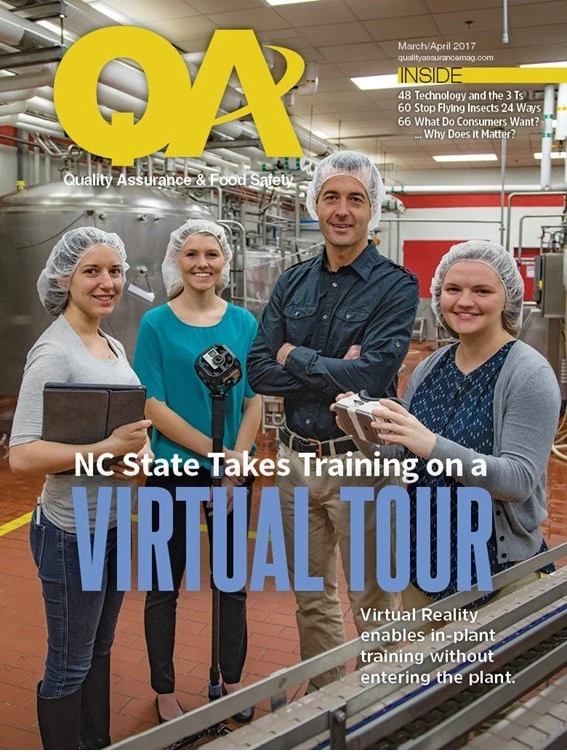
Managing pests in food plants without pesticides. Is it possible? Yes.
You can manage pests without pesticides. Pest management is the application of practices to prevent pests from causing problems, but it does not necessarily mean total eradication. Pest control solves a problem after an occurrence and utilizes pesticides for total eradication, however it can mean dead pests in the facility and does not provide a way to keep pests from coming back. Thus, it is more important to implement effective pest management than to simply control pests. What is effective pest management? What are practical solutions?
IPM. Pest management is commonly defined as Integrated Pest Management (IPM). IPM consists of multiple tactics to keep pests below levels that may cause harm, damage, filth, contamination, disease, or death. Relying on more toxic pesticides to solve a problem is usually a reactionary short-term approach and should not be a tactic of first choice. Rather, IPM tactics should consist of:
- Inspection/identification of the pest.
- Education for all involved.
- Exclusion to keep the pest out.
- Administrative support to provide sufficient resources.
- Pest trapping to monitor activity.
- Sanitation to remove competing food and water sources.
- Maintenance to provide pest management repairs.
- Physical modification to make environment unsuitable for pest activity.
- Service technician to deliver the right tactic at the right place and right time.
- Preventive use of pesticide.
- Quality assurance to provide checks and balances for sustainability.
- Documentation of the program for auditors, customers, and regulators.
One of the most critical tactics is keeping the pests out (exclusion). Exclusion consists of obvious methods, such as keeping doors shut for pest, security, safety and microbial management. Employees should be educated to understand the consequences of open doors with a closed-door policy strictly enforced. But exclusion also consists of not-so-obvious tactics, such as checking incoming goods for pests. One bag of infested material expedited with poor First In First Out (FIFO) or over-age storage practices can ruin tons of material. Inspecting inbound materials prior to unloading is effective pest management. (For more information on exclusion tactics, see my column, “Now Is a Good Time to Exclude Pests.” Another important tactic is keeping the facility clean (sanitation). Sanitation consists of the obvious, such as removing food, water and shelter that pests (including microbes) need to survive. Using a master cleaning schedule (MCS) consisting of predetermined frequency, cleaning methods, responsibility and evaluation is important to keeping a food plant clean. Poor sanitation hinders effective pest management, product safety, workplace safety, environmental compliance, hygiene and microbiological practices.
Cleaning less can save time but will create a pest (including microbe) problem causing more time well beyond the initial savings. Sanitation also includes the not-so-obvious, such as that of utility chases and drains which can cause an out-of-sight, out-of-mind problem and the entire trash/waste handling program. One often-overlooked sanitation factor is the importance of keeping the facility dry.
PROGRAM EFFICACY. If exclusion and sanitation are effective, there will be no pests to manage or control. Not only is that easier said than done, but how do you know if your program is effective?
Pest trapping to monitor activity is an important tactic that provides factual information. Sticky traps, insect light traps, and electronic monitoring systems provide 24/7 data. Historical data of pest catches help guide the strategic placement of devices to create a fact-based IPM program, by which a fixed pest device concept should be replaced with a flexible pest device concept.
Perhaps the most important person of a pest management program is the service technician — internal or external. As a chain is as strong as its weakest link, an effective pest management program is only as strong as the service technician. The service technician must have IPM knowledge with experience of working in complex and large food plants delivering the right tactic at the right place at the right time, without a reliance on pesticides. Working together with plant personnel is critical for an effective pest management program.
Documentation is an important part of IPM and must be accomplished so as to adequately present records to auditors, customers, and regulators. Electronic pest management recordkeeping is becoming a way of life, improving efficacy and efficiency of the entire pest management program.
POSSIBLE — AND LIKELY? While pest management in food plants without pesticides is definitely possible, it unfortunately, is not likely because the real world — of open unscreened doors, inadequate air flow, inaccessible equipment, uncleanable food contact surfaces, equipment leaks, poorly maintained drains, filters, and screens, lack of temperature and humidity controls, and cutbacks in cleaning and maintenance personnel — will provide a need to use pesticides.
The food plant is an entire planet to an insect. Pest-conducive conditions are abundant and can be found in many micro environments within a food plant. When pests are out of control, pesticides are needed to return to control. How can pest problems be prevented? Effective pest management means being proactive with IPM.

Explore the April 2017 Issue
Check out more from this issue and find your next story to read.
Latest from Quality Assurance & Food Safety
- Q&A: Sandra Eskin Leads Food Safety Advocacy Organization, STOP, as CEO
- STOP CEO Eskin on Government Layoffs, Challenges in Food Safety
- Mission Barns Announces Cell-Cultivated Pork Fat Launch Following FDA Clearance
- Hearthside Food Solutions Recalls Breakfast Sandwiches Due to Undeclared Allergen
- Walker’s Wine Juice Recalls Pumpkin Juice Due to Botulism Risk
- The Cascading Food Safety Impacts of Tariffs on the Food Industry
- Tyson Ventures Calls Startups to Apply for Tyson Demo Day
- Student Finalists Selected for IFT Product Development Competitions






